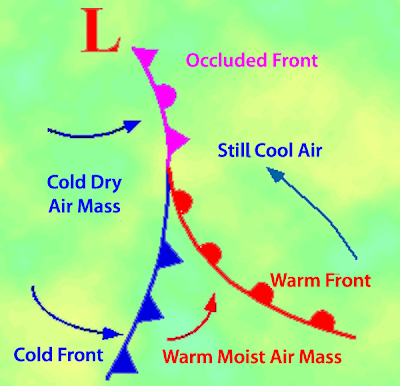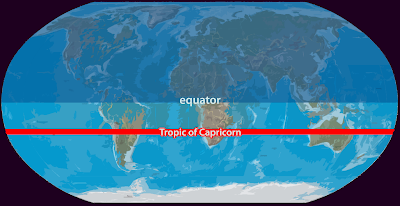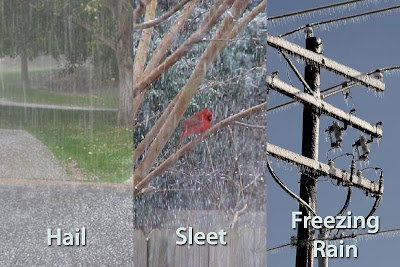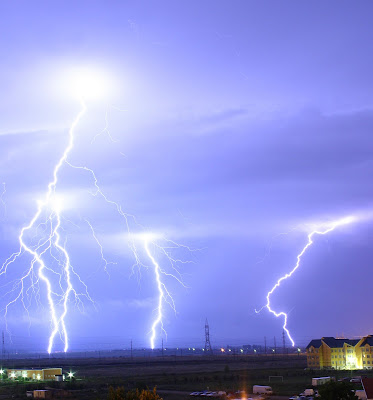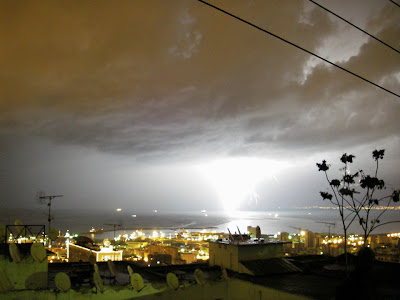Youíve probably heard meteorologists talk about the dew point and you wondered what impact that it has on the weather. The dew point is very important in many ways. It affects whether you will have to clean the frost off your windshield in the morning. The dew point determines how uncomfortable you will feel on a warm summerís day. It determines whether it will rain or snow. The dew point determines how high the danger is for a grass or brush fire during a dry spell. Thatís just a few reasons why it is so significant. The definition of dew point is as follows: The dew point is the temperature at which the moisture (water vapor) in the air begins to condense. The warmer the air is, the more moisture it can hold. I always use the glass of water comparison to explain this. Letís say you have two glasses, one large the other small. Since warmer air can hold more water vapor, the large glass represents the warm air. If you fill the smaller glass (which represents the cold air) to 90% full and you pour it into the larger glass, the percentage of water in the larger glass will be much less than the small glass was. Since the opposite will be true, letís say that the large glass was 90% full and you poured the water into the smaller glass. It will overflow, wonít it? That overflowing represents condensation, when the air just cannot hold the water vapor in its invisible gaseous form and it turns into visible water droplets. You can literally see the dew point in action during cold, damp weather. When you breathe out, the air coming out of your lungs is very warm. As this air hits the colder air outside your body, the invisible water vapor immediately condenses and you see the ìcloudî in front of your face. Why does it condense? The colder air cannot hold the water vapor and it releases it immediately. This ìcloudî consists of tiny drops of moisture that are suspended in the air. In the real clouds in the sky, itís the same principle. On a summer day, when the sun heats the ground, the air immediately above the ground also warms up. Since warm air is lighter than cold air above it, it rises into the sky. As it rises, the air cools until it reaches the temperature that it can no longer hold the water vapor. That temperature is the dew point. Then, a cloud forms. You might askÖ Why does dew (or frost) form on my car but there is no fog? The reason is that the temperature of the surface of your car is cooler than the surrounding air and yes, it has to be at or below the dew point even though the air is not at or below the dew point outside. Once the air temperature reaches the dew point, fog will form. The reason the dew point is important during the warmer months is this. When you perspire, the water on your skin evaporates and cools your body. This is the bodyís natural temperature regulating system at work. When the dew point is high, the evaporation rate is very slow because there is so much water vapor in the air, and you donít get the cooling effect from your wet skin. The dew point also affects how you feel when you get out of a pool, lake or the ocean. On those days when the dew point is very low, you will feel cooler than when the dew point is high. This is because when the dew point is low, the water on your skin evaporates faster thus cooling you off. I hope this explanation helps you understand the importance of the dew point.
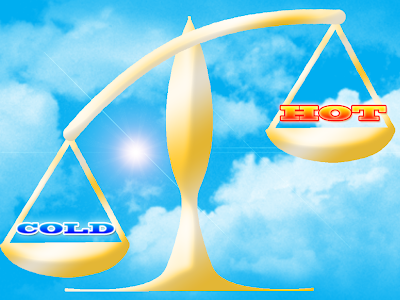 Cold air is much heavier than warm air and this is the basis for much of what we call weather. Did you ever notice after taking a hot shower, that when you first open the door to the bathroom, the cooler air from outside the bathroom comes in at the lowest level? Or how about when you open your freezer, you could feel the cold air just rush downward towards the floor. Cold air in the atmosphere behaves the same way and this is why it stays separate from air that is warmer. Why is cold air heavier than warm air? Cold air is denser than warm air. The molecules are packed closer together. The amount of water vapor in the air also affects the density of the air. The more water vapor that is in the air, the less dense the air becomes. That is why cold, dry air is much heavier than warm, humid air. You may have heard that a baseball or a golf ball will travel further on a warm, humid day than it would on a cold, dry day. Since the warm, humid air is less dense, the ball travels through it with less friction. Please read my posts on cold fronts and warm fronts which describe how the different air masses interact and the weather that is caused by them.
Cold air is much heavier than warm air and this is the basis for much of what we call weather. Did you ever notice after taking a hot shower, that when you first open the door to the bathroom, the cooler air from outside the bathroom comes in at the lowest level? Or how about when you open your freezer, you could feel the cold air just rush downward towards the floor. Cold air in the atmosphere behaves the same way and this is why it stays separate from air that is warmer. Why is cold air heavier than warm air? Cold air is denser than warm air. The molecules are packed closer together. The amount of water vapor in the air also affects the density of the air. The more water vapor that is in the air, the less dense the air becomes. That is why cold, dry air is much heavier than warm, humid air. You may have heard that a baseball or a golf ball will travel further on a warm, humid day than it would on a cold, dry day. Since the warm, humid air is less dense, the ball travels through it with less friction. Please read my posts on cold fronts and warm fronts which describe how the different air masses interact and the weather that is caused by them.


 Did you know that the dryness actually helps to add to the higher temperatures during a drought? How? In normal conditions, some of the sun's energy is used up to evaporate moisture in the ground, vegetation and other various surfaces. However, when the ground is extremely dry, the sun's energy that is normally used to evaporate this moisture in the soil, goes towards adding heat to the atmosphere. In other words, during a drought, nearly all of the sun's energy goes to making it warm instead of drying the ground and various surfaces.
Did you know that the dryness actually helps to add to the higher temperatures during a drought? How? In normal conditions, some of the sun's energy is used up to evaporate moisture in the ground, vegetation and other various surfaces. However, when the ground is extremely dry, the sun's energy that is normally used to evaporate this moisture in the soil, goes towards adding heat to the atmosphere. In other words, during a drought, nearly all of the sun's energy goes to making it warm instead of drying the ground and various surfaces.












